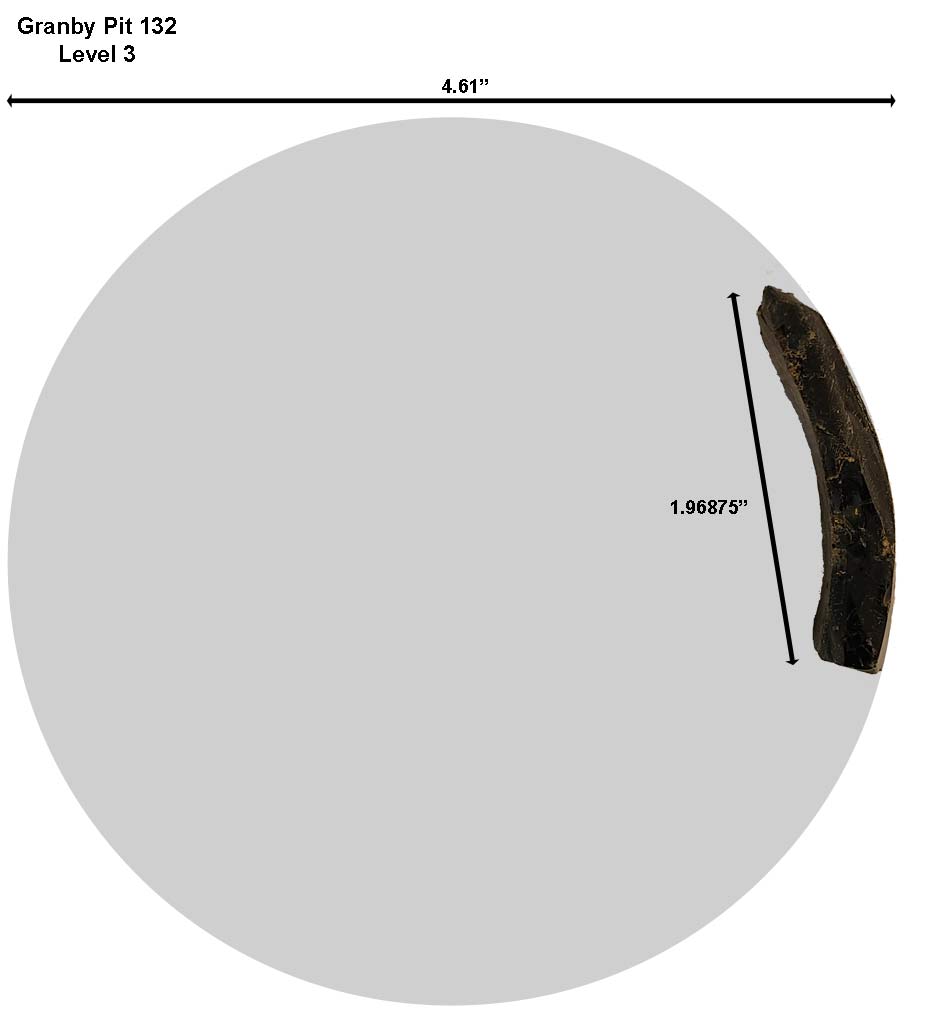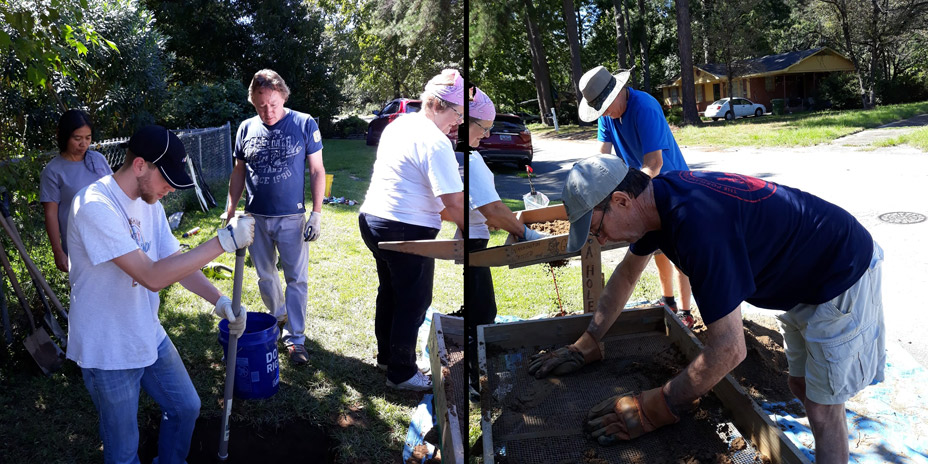Pit 132: Level 3
Completed on September 25, 2021, by Kim and James Masters, Gary and Sue Kelly, Jocelyn and DC Locke, Odess and David Brinkman. James had started digging some in level two and would do most of the digging in level three. Level three finally broke us away from all the asphalt and gravel. We did find one clay piece, but I would estimate that, for every clay piece we saved, there were ten more that got push through the sifter. So, there is a slight possibility that this clay find in level three could be from a privy cap. We have to be on the lookout for more clay evidence in the next adjacent pits. One cool find is always the shell-edge pearlware. The one we found in level three was a large piece with a green edge. There were also several other pearlware pieces. These probably date to 1785-1800. We also found another bottle piece with a measurable diameter. It was not a bottom piece, but at a 4.61" diameter, it was from one of the larger colonial period green bottles. We continued to find more Native American pottery pieces.
At our standard depth of 50cm, we leveled the pit and expected this to be the end, but I was well aware that we had found a group of post-hole features when we dug in this area six years ago. Sure enough, two archaeological features appeared, and we continued to excavate them. One took on the appearance of a post hole. The other was an unusual shape, and we were finding artifacts in it. This would prove to be the most artifact-dense area of the pit. We found more pearlware from Granby and the pit's best two examples of Native American pottery, all in that feature. We continued excavating the feature to 80cm when it finally disappeared. As it did, the artifacts also stopped.
After the dig, I reviewed the finds of the adjacent pits and found where (over six years ago) we predicted the exact position of the post hole in this pit. In 2015, from pits 72 and 75, we plotted a line between two post holes. A line perpendicular to this line pointed exactly at Friday's ferry site. Could this have been Thomas Brown's trading post which was built to face the old Indian river crossing where Friday's Ferry would come into operation after Brown died in 1747? Six years ago, I continued that line out to where the next possible post might be found. Using the distance between the post holes of pits 72 and 75, the next predicted post fell exactly where we found the post hole in pit 132 (see the graphic below from 2015 and the updated version of it.) These features add more evidence to a wood structure that may date to Brown's Trading post/house. The Granby house, based on what we have found, had brick foundation segments and probably did not have wood posts in the ground. Of course, posts may have been used, in both cases, for tying horses. The hole diameters are probably a little too large to have been posts for a fence, although that is a possibility. These features were probably the most significant finds of pit 132.
After filling the hole, David and DC took a walk on the riverwalk to the location where the columns were cut for the SC Statehouse. The location looks like a creek entering the Congaree River, but this was really man-made. Up this old quarry cut, and in the fenced-in quarry property, local explorers have told us that they have found a forgotten monument to George Washington's visit in 1791. That's another Granby mystery that's waiting to be solved.
Pit 132: Level 3 produced: 6 kitchen pottery, 2 stoneware, 5 kitchen glass, 26 window glass, 7 nails, 24 Native American, 3 charcoal, 11 iron, 1 clay, 2 features, and 1 slag.
In total Pit 132 (all levels) produced: 18 kitchen pottery, 12 stoneware, 13 kitchen glass, 48 window glass, 18 nails, 1 pipe, 128 activity, 61 Native American, and 2 archaeological features.
Out of the 132 pits in the Granby dig, this pit ranked: 38
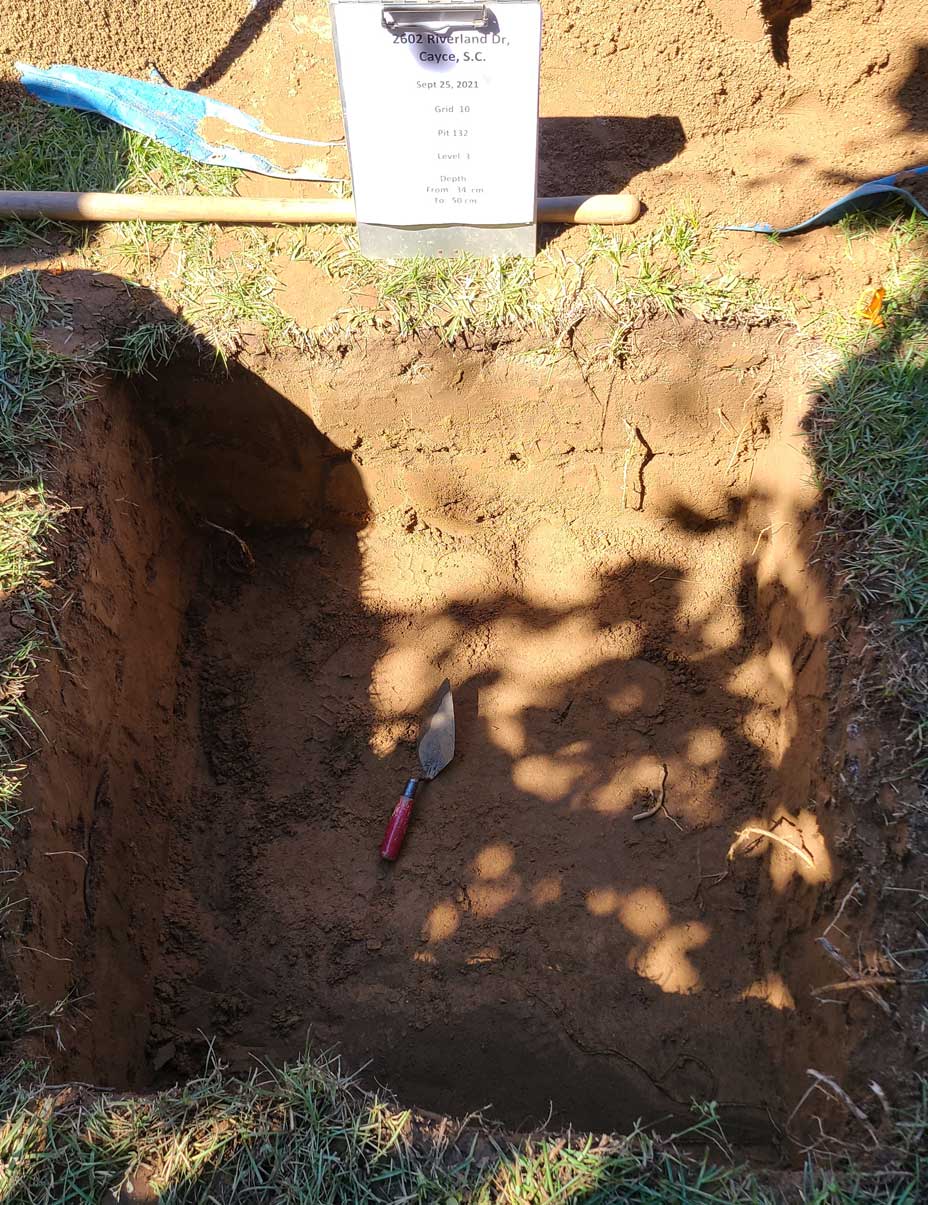

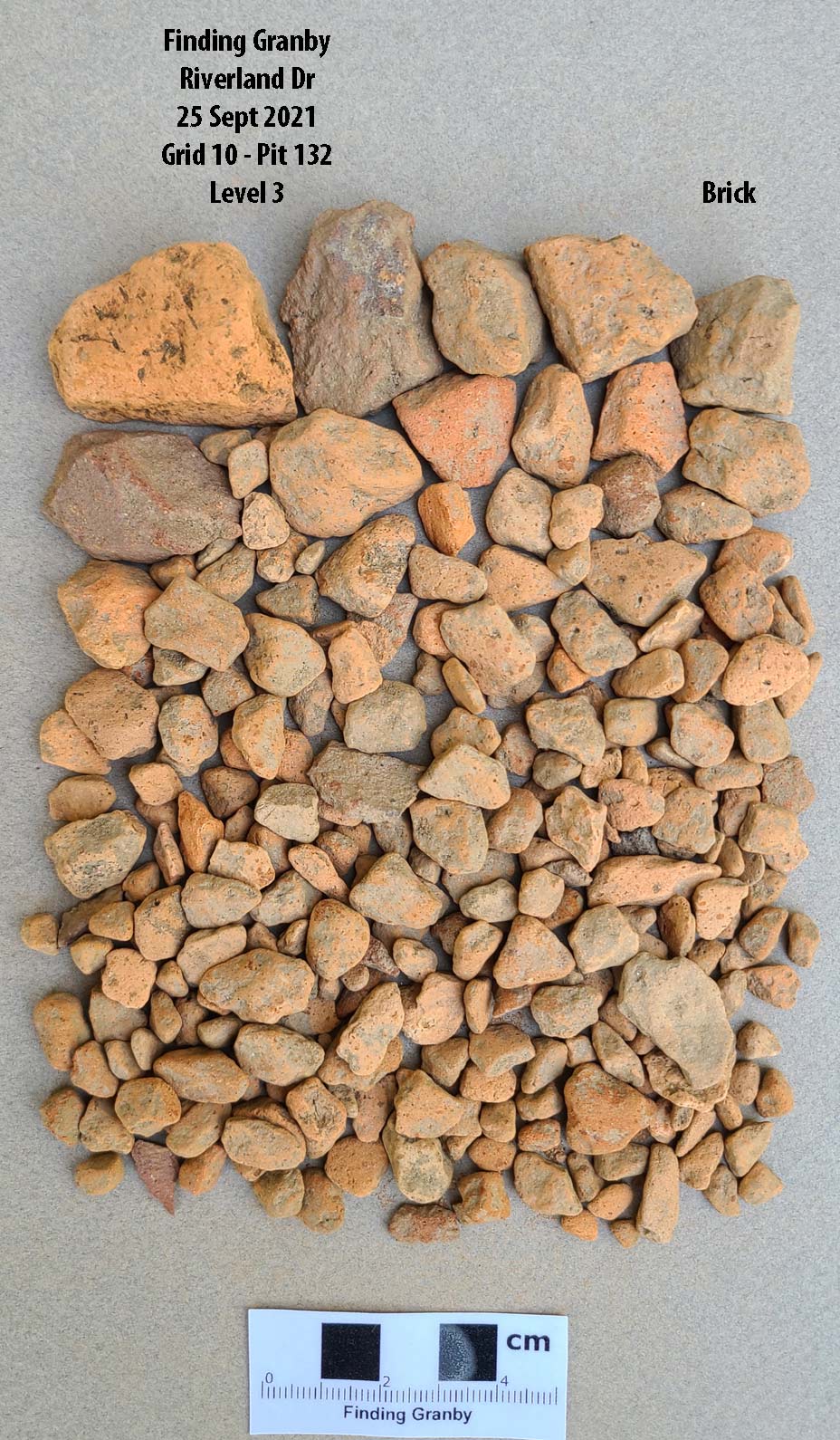
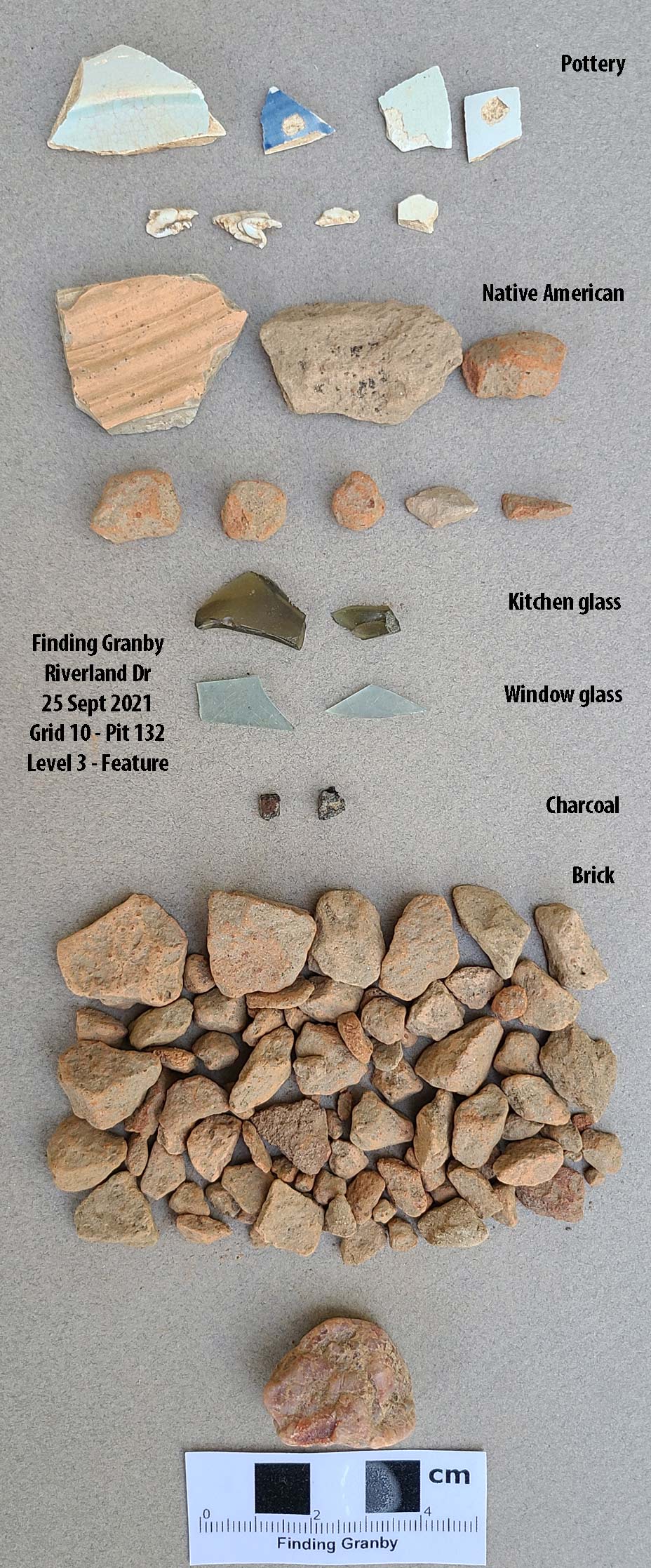
Below are different views of the features at the bottom of pit 132
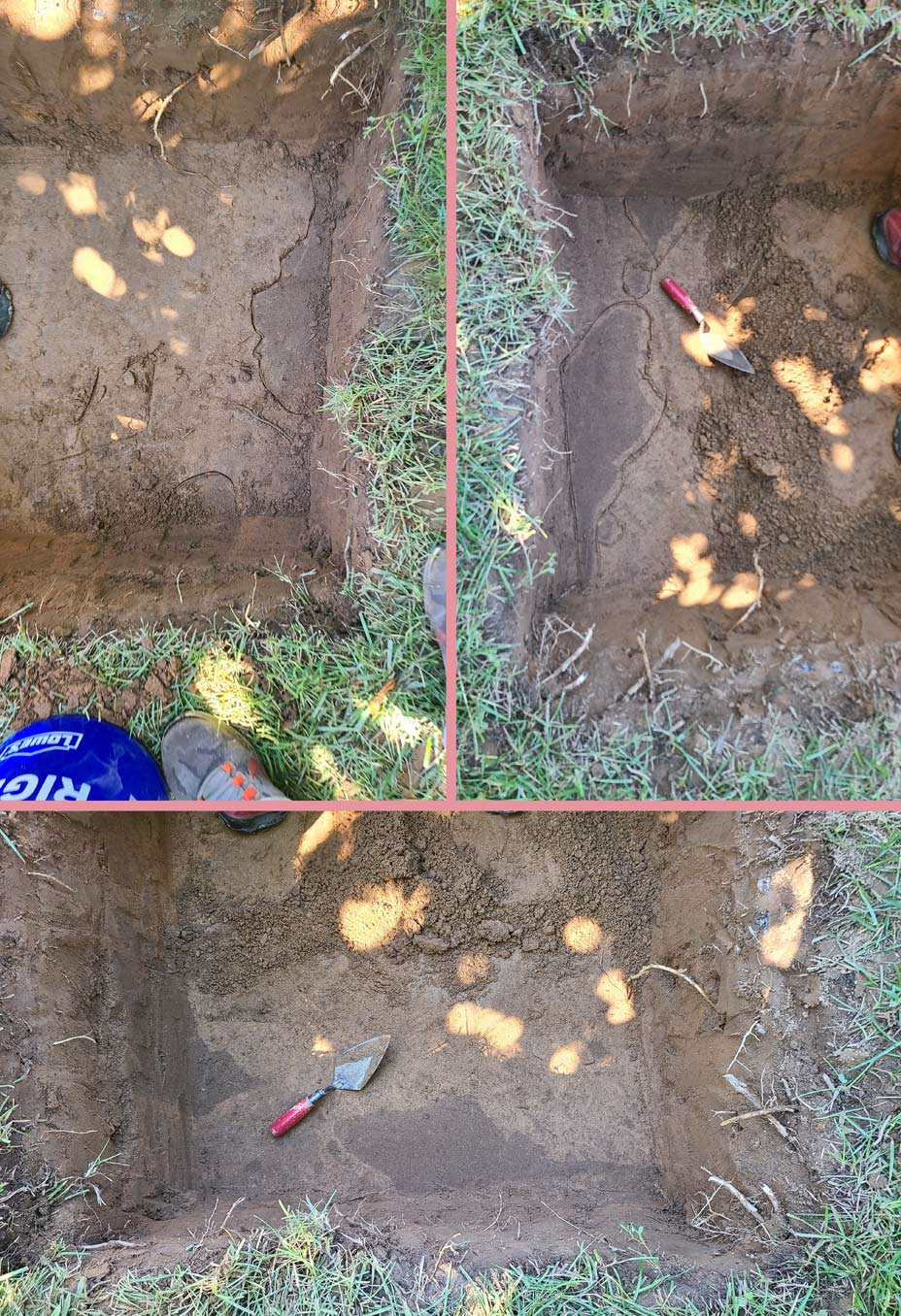
Below is the 2016 predicted position (red dot) of the post hole find in pit 132.
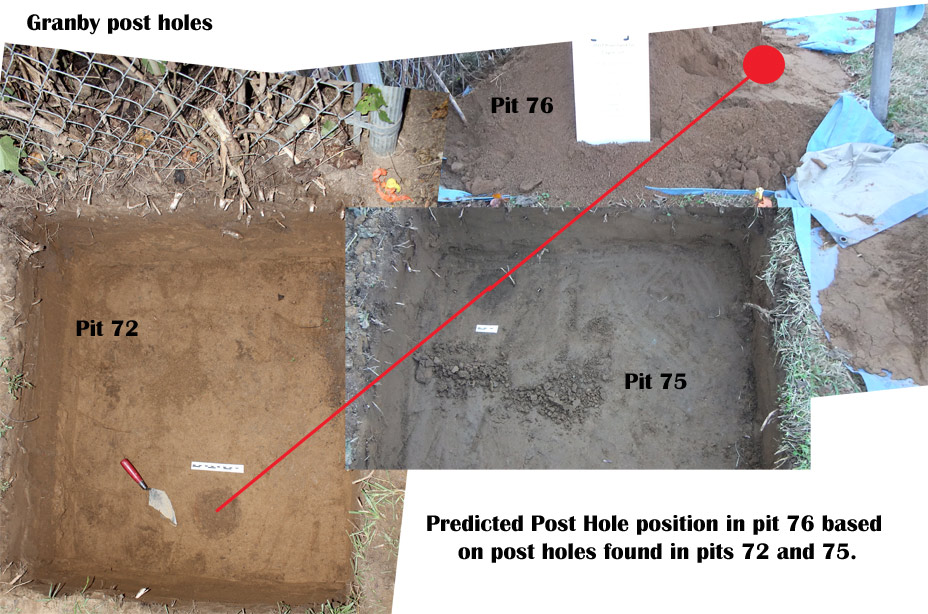
Below is the updated graphic with a picture of pit 132.
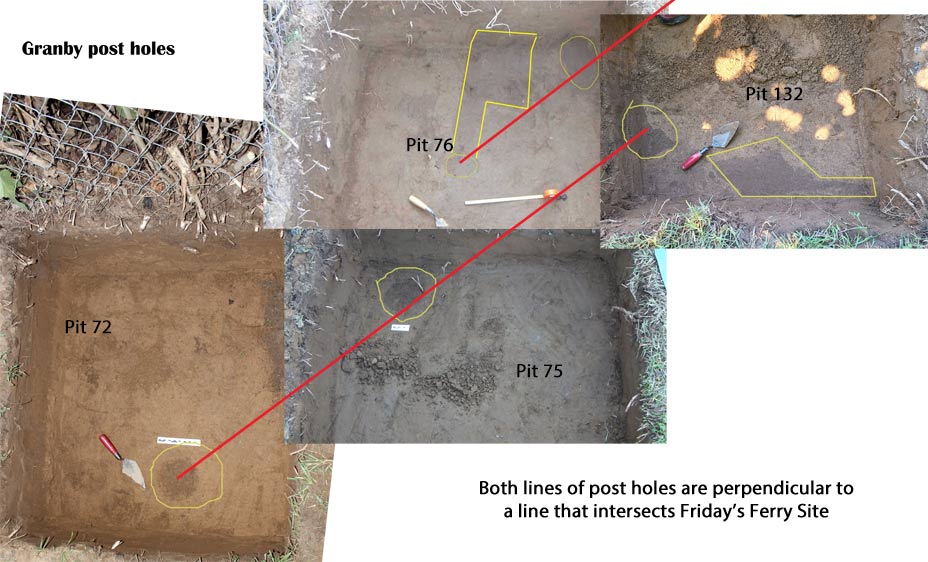
Below is the bottle diameter calculation from the green glass artifact.
